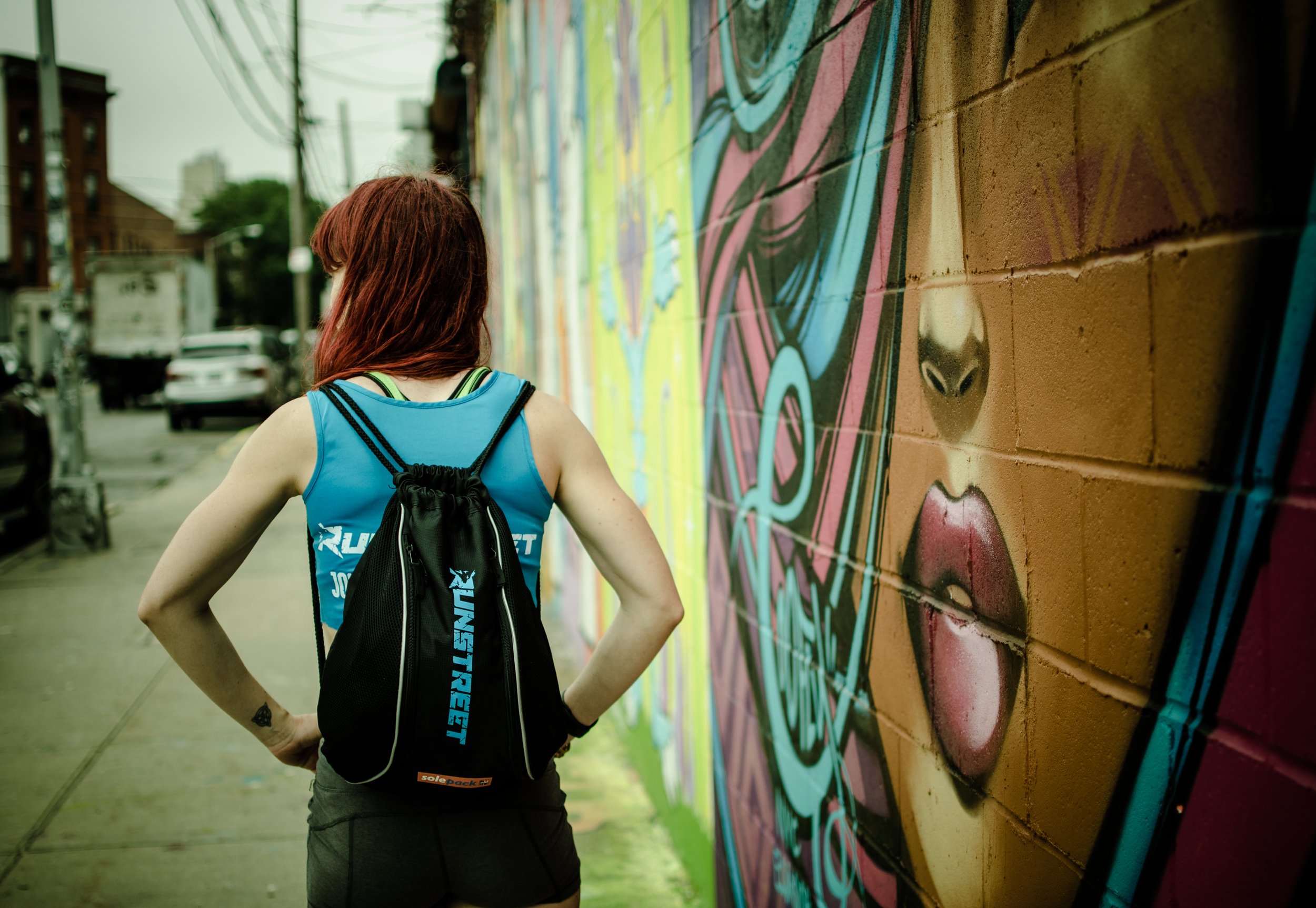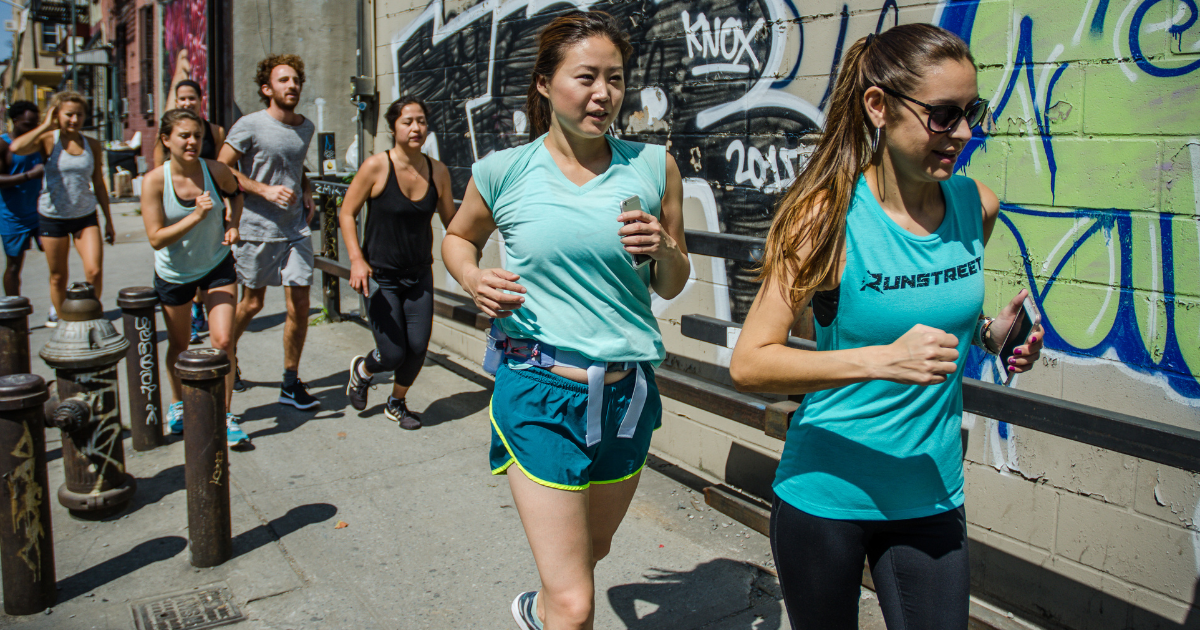What Is Urban Hiking and How to Get Started
By Marnie Kunz, NASM-certified trainer, USATF- RRCA-certified run coach
If you live in a city or are visiting one, urban hiking is a great way to explore the area while getting in a workout. You may be wondering what urban hiking is and how it’s different from regular hiking. This guide will give you everything you need to know about urban hikes. As a longtime New Yorker and world traveler, I’ve inadvertently gone urban hiking many times as well as learned a lot about what to bring and wear for the best urban hikes. From traipsing over the Brooklyn Bridge in a downpour to walking through the city’s most concrete areas on 90-degree days, I’ve sometimes learned the hard way what works best for city hikes. This guide will help you get outside in your city, boost your daily step count, and enjoy the urban green spaces that make our cities great.
Related Post: A Local’s Guide to Brooklyn Running
Urban hiking is a great way to explore your city.
What Is Urban Hiking?
Urban hiking is making the most of urban spaces by hiking along city trails, paths, bridges, and other urban areas. During the pandemic, urban hiking skyrocketed in popularity as people sought out safe outdoor adventures close to home. Groups like Bay Area Adventure Gals sprang up to connect people in cities and share city hiking adventures, tips, and experiences.
Related Post: 5 Best Hikes Near NYC
You can go on urban hikes in any city, from big metropolises like NYC and Los Angeles to smaller cities like Portland, Denver, and San Francisco. Since the pandemic, urban hikes have remained an important part of fitness and outdoor activities for city dwellers, and many cities have changed regulations and added more public outdoor spaces for urban hikers to enjoy due to high demand.
Related Post: 15 Best Places to Run in Chicago
As with regular hiking, urban hiking can be as intense as you’d like it to be - ranging from a few miles walking through your city to day-long adventures in urban wilds with a backpack full of supplies. In New York City, urban hikes are a way of life, as many New Yorkers and tourists enjoy walking on the sidewalks, trails, bridges, and dirt trails in parks throughout the city - ranging from Central Park in the middle of Manhattan to Prospect Park and Coney Island in Brooklyn. (Check out my list of the 25 best places to run in NYC for inspiration on the city’s best trails and paths.)
People embark on urban hikes to see top attractions and monuments, or to get in a great cardio workout when there’s not enough time to leave the city for regular hiking. With urban hikes, you can enjoy the great outdoors even when surrounded by concrete.
Use this checklist to prepare for your adventures.
Benefits of Urban Hiking
There are many mental and physical benefits of going on urban hikes. The thrill of seeing new sites and exploring a city is a major perk. Whether you’re new to a city, visiting, or a longtime resident, you can find new places to enjoy or experience different seasons at your favorite spots. An advantage of cities is having endless new energy, people, and art to see. I love going for long walks to look at street art in NYC, for instance, and it is always changing.
Another benefit of city hiking is the exercise. Walking through city parks gives your body a calorie-burning, low-impact cardio workout with rewards like strengthening your heart, bones, and muscles. In addition, you’ll reap the mental health benefits of reducing your stress levels and improving your mood from exercise.
Here’s a summary of the benefits of urban hiking:
Improved mental health. Reduced symptoms of stress and elevated mood.
Connecting with your city and the people in it.
Better health, including improved fitness and cardio health.
Meeting your daily step goal.
Related Post: What Is a Good Daily Step Count?
How to Get Started with Urban Hikes
With so many perks of urban treks, you may be ready to get started hitting the pavement. Here are some tips to help you enjoy safe and fun experiences:
Improve your fitness by exploring your city.
Plan your route. Decide where you want to go and map out your route. If you already know the city well, you may not need a map, but if you’re a tourist or not familiar with the neighborhood, you can create your own map using Google Maps.
Pack a bag. Bring the supplies you’ll need for your hike. You won’t need as much for shorter hikes but some things - like water, an ID, a form of money, and an emergency poncho - are essentials.
Dress for the weather. Wear layers that suit the climate you’re in. Include versatile pieces like hats. For New York City, the weather can change quickly and tends to get windy and rainy fast, so a baseball hat is good for sun protection and shade in hot weather and helps shield your face from the rain in case rain hits.
Let someone know where you’ll be. If you’re hiking alone, let someone know where you’ll be and how long you plan to be gone.
Observe city safety protocol. Be aware of your surroundings, avoid people or areas that make you feel unsafe, and stay alert.
Don’t disturb local wildlife. If you're hiking with your dog, observe leash laws and make sure your pup doesn't hurt or disturb local wildlife.
Build your hike length and difficulty levels gradually. Adding mileage or intensity to your hikes slowly will help build your endurance and fitness level and reduce your risk of getting injured or overtraining. As you progress in your hiking, you can tackle hikes with more elevation gain with challenges like lots of stairs and hills.
Great Urban Hikes in NYC
Here are some stellar urban parks to check out in New York City for scenic hikes and miles of trails:
Central Park
The crowning jewel of Manhattan offers 843 acres of pristine woodlands, meadows, lakes, and paths - both paved and gravel. The sweeping city views offer a cinematic experience unlike any other. When you visit Central Park, you’ll see why it’s in so many movies and TV shows.
Forest Park
This Queens park has some of the most natural trails you'll find in NYC with over 500 acres of trails, forests, creeks, and meadows.
Prospect Park
Designed by the same architect as Central Park, Brooklyn's Prospect Park has ornate bridges, a serene lake, paved and unpaved trails, and a 3.3-mile paved loop that's perfect for walking, running, or biking.
Marine Park
Marine Park is Brooklyn's largest park, with 530 acres of salt marshes and grassland. The Salt Marsh Nature Trail is a protected natural area that offers a scenic trek away from the stresses of city life.
What You Need for Urban Hikes
These are some staple items that can make your urban hiking adventures go smoothly. You can put the basics in your backpack. For longer hikes and night excursions, you’ll need more supplies than short daytime trips of an hour or two. Here are some items to pack for your hike:
Phone or smart device that can make emergency calls
Backup phone charger
Hydration - a reusable water bottle
ID
Money or form of payment in case of an emergency
Poncho - a lightweight one that can be stored in a small space in your bag
Comfortable shoes for city streets and trails. You will not need hiking boots but rather well-padded sneakers. If it’s raining, consider waterproof running or walking shoes made with Gore-Tex or similar material.
Clothes suitable for the weather. Dress in layers and leave room in your bag to carry your top layer if you get too hot.
Sunscreen. Use sunscreen with broad-spectrum protection against UVB and UVA rays. (See our article on the best sunscreens if you need help picking one).
Sunglasses
A hat. If it is warm or mild outside, a baseball hat will protect you from the sun and rain. For cold weather, opt for a beanie or similar style warm hat.
Snacks. Some easy and healthy snacks are always a good idea for breaks along your trip. Try nuts, low-sugar protein bars, edamame, apples, hard-boiled eggs, or cheese and whole grain crackers. A whole-wheat sandwich is great for longer trips.
Reflective gear if you plan to be out at night. A jacket and hat with reflective strips will help you stay visible at night.
Have you been on any urban hikes? What are your favorite cities to explore? Comment below or tag @Runstreet on Instagram to share your fitness adventures and get cheered on.
Related Posts: Hiking Tips for Beginners, Hiking Essentials for Beginners
Marnie Kunz is a NASM-certified trainer and USATF- and RRCA-certified running coach based in Brooklyn, NY. Marnie likes helping people get and stay active to enjoy a better quality of life. When she’s not doing fitness things, Marnie enjoys exploring with her dog, a mischievous rescue Akita.





